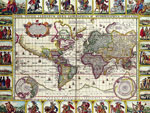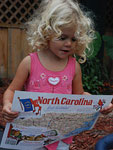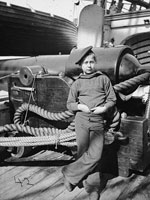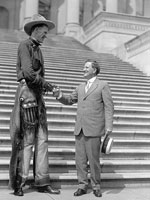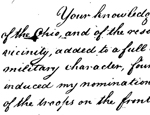Bridging the Gap Between Ancient and Modern Democracies

California standards require teaching the Rise of Democratic Institutions—Pericles, Athens, etc., compared to the English Bill of Rights, Magna Carta, and Declaration of the Rights of Man. My high school students seem to have a really rough time with this. Do you have some suggestions for some effective ways to get this information across to them?
California standards 10.1 and 10.2 are difficult to teach because students struggle with their disjunction. By definition, history is a study of the sequence of past events, and students comprehend the discipline because they have a basic understanding of chronology. They understand that what happened yesterday influences today. In history class students take this rudimentary understanding of "history" and apply it to various regions: in the 7th grade they study the chronology of Chinese history, Islamic history, European history, etc. Then in the 8th grade, they study the history of the United States.
What are high school sophomores supposed to think when on the second day of their school year, their history teacher begins discussing Athenian democracy and the Declaration of Independence (factoids separated by 3,000 years and thousands of miles!) in the same sentence? Such a discussion shatters everything students thought they knew about history. While professionally trained history teachers see the common theme of democracy inherent to the two standards, novice high school learners do not. In short, the problem with standard 10.1 and 10.2 is that they do not follow the historical patterns of space and time innate to a 10th grader's understanding of history, and it is the first standard we are expected to cover!
We can remedy the chronological and spatial problems outlined above by making sure we present the troublesome aspects of standards 10.1 and 10.2 as philosophical influences on modern thinkers as opposed to presenting them as independent historical events. In other words, instead of presenting Greco-Roman democratic institutions, Judeo-Christian civil law, and British constitutional monarchy as various and separate "histories" loosely linked by some political concept, we should present them as a body of previous Western (and Near Eastern) philosophies that deeply influenced modern thinkers like John Locke, Jean Jacques Rousseau, and Voltaire. In doing so, the standards are presented in a fashion that is coherent with the students understanding of history. It is occurring in one time and place—the modern Atlantic world.
What follows is an activity I have done for the last few years in an attempt to get students to see the connection between ancient and modern democracy. I give students the graphic organizer pictured below (which is, in essence, a visual representation of the argument outlined above) and make sure that students understand the format and its meaning.
We then take on the role of the enlightenment philosophers living in the modern era (sometimes even wearing masks borrowed from a TCI activity). I want students to use the graphic organizer to see themselves as modern thinkers who are reading or thinking about ancient, classical, and early modern Western philosophies. Once this is understood, we write the names of the source titles in their appropriate spot on the graphic organizer so that (again) students see that they are from our past. We then read excerpts from the following documents and explore their major themes:
Once we understand how and why these documents are influential to us, we then turn our attention to excerpts from documents associated with the Atlantic Revolutions.
- Declaration of Independence
- Bill of Rights
- Declaration of Rights of Man and of the Citizen
- Simón de Bolívar's Message to the Congress of Angostura, 1819
We write the titles down in the appropriate space on the graphic organizer so that students see that our work, in turn, becomes very influential in the revolutions of the modern Atlantic world. And lastly we connect the modern democratic documents to the Greek, Judeo-Christian, and English documents.
While this activity is probably not much different from what many Modern World History teachers do, I think that the image bridges the gap between what the teacher inherently knows and what is invisible to the novice. It helps students see the influence of the early documents on modern liberal democracy. It makes what is invisible to sophomores visible.

